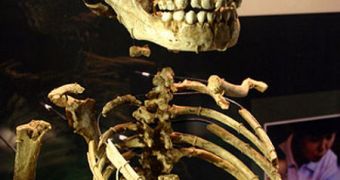A groundbreaking genetic effort has finally yielded some astounding results. Scientists managed to complete the lengthy process of analyzing the 3 billion letters of the Neanderthal genome, in a study that provides evolutionary biologists and anthropologists with new insight into how modern-day humans evolved. One of the things that really stand out from this research is the fact that Europeans and Asians tend to carry genes that belonged to the ancient hominid, whereas people living in Africa do not. It has been estimated that around 2 percent of the DNA we carry today comes from Neanderthals.
“This sequencing project is a technological tour de force. You must appreciate that this international team has produced a draft sequence of a genome that existed 400 centuries ago. Their analysis shows the power of comparative genomics and brings new insights to our understanding of human evolution,” explains the director of the National Human Genome Research Institute (NHGRI), Eric D. Green, MD, PhD. The NHGRI is a division of the US National Institutes of Health (NIH), Details of this important achievement appear in the May 7 issue of the highly-regarded journal Science.
“The genomic calculations showed good correlation with the fossil record. According to our results, the ancestors of Neanderthals and modern humans went their separate ways about 400,000 years ago,” adds NHGRI computational geneticist Jim Mullikin, PhD, who is a coauthor of the research. He is also the acting director of the NIH Intramural Sequencing Center. Study results paint an interesting picture of the similarities between modern humans, Neanderthals and chimpanzees. The Neanderthals' genetic code resembled our own in a proportion of 99.7 percent, and that of chimpanzees at about 98.8 percent. Modern-day humans are 98.8 percent identical to the primates.
“The data suggests that the genes flowed from Neanderthal to modern humans. That had to have occurred at least once during the 20,000 to 30,000 years, in which modern humans and Neanderthal both lived on the Eurasian continent,” reveals Dr. Mullikin. “These are preliminary data based on a very limited number of samples, so it is not clear how widely applicable these findings are to all populations. The findings do not change our basic understanding that humans originated in Africa and dispersed around the world in a migration out of that continent,” concludes senior advisor Vence L. Bonham, Jr., JD, who works for the NHGRI Director on Societal Implications of Genomics.

 14 DAY TRIAL //
14 DAY TRIAL //